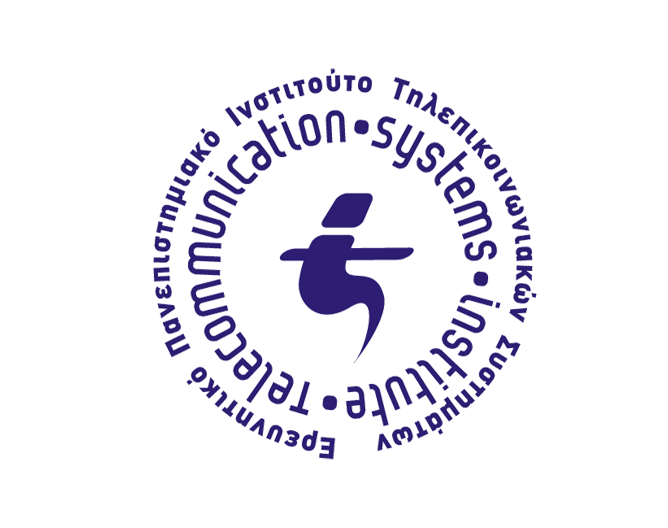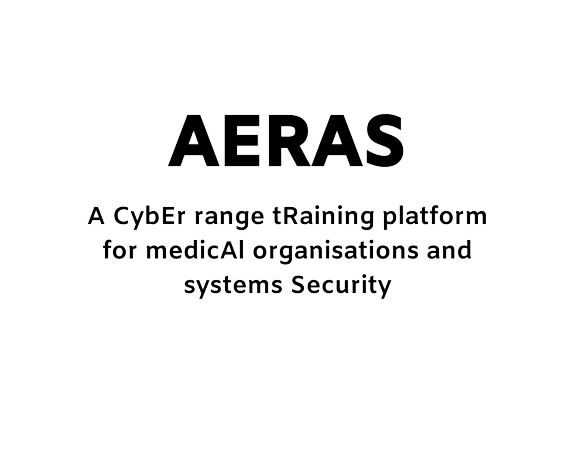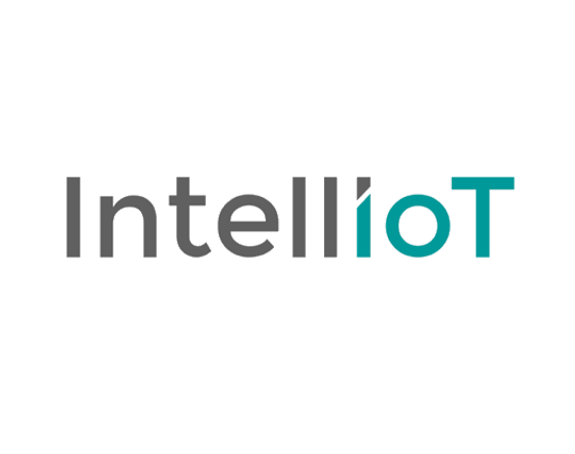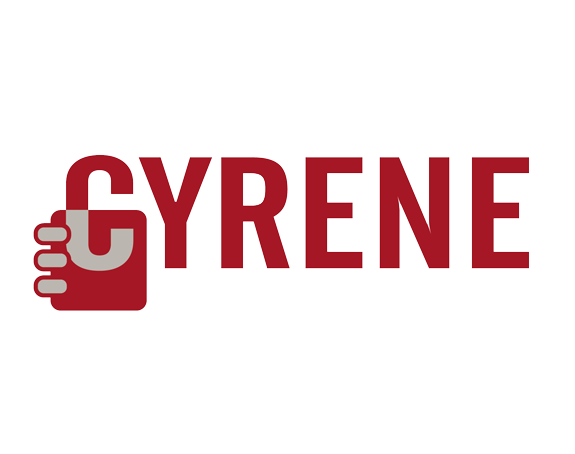Green.Dat.AI
Energy-efficient AI-ready Data Spaces
- Χρηματοδότηση: Ευρωπαϊκή Επιτροπή Ε.Ε.
- Κωδικός Έργου: Green.Dat.AI
- Πρόγραμμα: HORIZON-CL4-2021-DATA-01-03
- Προϋπολογισμός: 316875 € (Συνολικός: 6730687.5 €)
- Ημερομηνία Έναρξης: 1η Ιανουαρίου 2023
- Διάρκεια: 36 μήνες
- Website(s):
Πληροφορίες
GREEN.DAT.AI aims to channel the potential of AI towards the goals of the European Green Deal, by developing novel Energy-Efficient Large-Scale Data Analytics Services, ready-to-use in industrial AI-based systems, while reducing the environmental impact of data management processes.
GREEN.DAT.AI will demonstrate the efficiencies of the new analytics services in four industries (Smart Energy, Smart Agriculture/Agri-food, Smart Mobility, Smart Banking) and six different application scenarios, leveraging the use of European Data Spaces. The ambition is to exploit mature (TRL5 or higher) solutions already developed in recent H2020 projects and deliver an efficient, massively distributed, open-source, green, AI/FL – ready platform, and a validated go-to-market TRL7/8 Toolbox for AI-ready Data Spaces. The services will cover AI-enabled data enrichment, Incentive mechanisms for Data Sharing, Synthetic Data Generation, Large-scale learning at the Edge/Fog, Federated & Auto ML at the edge/fog, Explainable AI/Feature Learning with Privacy Preservation, Federated & Automatic Transfer Learning, Adaptive FL for Digital Twin Applications, Automated IoT event-based change detection/forecasting.
The GREEN.DAT.AI Consortium consists of a multidisciplinary group of 17 partners from 10 different countries (and one associated party), well balanced in terms of expertise. The vast majority of partners already have key roles in a number of projects funded under the Big Data PPP (ICT-16-2017) topic, namely BigDataStack, CLASS, Track & Know, and I-BiDaaS and are serving as active members of the BDVA/DAIRO Association, FIWARE, AIOTI, and ETSI. In addition, partners come from a variety of sectors, such as banking, mobility, energy, and agriculture, constituting a representative workforce of their respective domains, which will contribute to industry adoption and stimulate uptake in other sectors as well.
- INLECOM INNOVATION ASTIKI MI KERDOSKOPIKI ETAIREIA – Greece
- UNIVERSITY OF PIRAEUS RESEARCH CENTER – GReece
- CONSIGLIO NAZIONALE DELLE RICERCHE- Italy
- KONNECTA SYSTEMS LIMITED – Ireland
- ATOS IT SOLUTIONS AND SERVICES IBERIA SL – Spain
- Telecommunication Systems Institute – Greece
- ITC – INOVACIJSKO TEHNOLOSKI GROZD MURSKA SOBOTA – Slovenia
- CAIXABANK SA – Spain
- UNIVERZA V MARIBORU – Slovenia
- FERROVIAL SERVICIOS SA – Spain
- AEGIS IT RESEARCH GMBH – Germany
- RED HAT ISRAEL LTD – Israel
- INESC TEC – INSTITUTO DE ENGENHARIADE SISTEMAS E COMPUTADORES, TECNOLOGIA E CIENCIA – Portugal
- Waboost razvoj tehnologij d.o.o. – Slovenia
- CNET CENTRE FOR NEW ENERGY TECHNOLOGIES SA – Portugal
- INTRASOFT INTERNATIONAL SA – Luxembourg
- SUNESIS, inovativne tehnologije in storitve,d.o.o. – Slovenia
- SPHYNX TECHNOLOGY SOLUTIONS AG – Switzerland
Other Projects

Green.Dat.AI

AI4RecNets

SecOPERA

EMERALDS

EDGELESS

SUN

CLIMOS

ORAMA
Platoons

SENTINEL

OPTIMA

EnerMAN

ΕΛΑΙΩΝ

AERAS

IntellIoT

Cyrene
SecOPERA
Secure OPen source softwarE and hardwaRe Adaptable framework
- Χρηματοδότηση: Ευρωπαϊκή Επιτροπή Ε.Ε.
- Κωδικός Έργου: SecOPERA
- Πρόγραμμα: HORIZON-CL3-2021-CS-01-02
- Προϋπολογισμός: 448750 € (Συνολικός: 4581135 €)
- Ημερομηνία Έναρξης: 1η Ιανουαρίου 2023
- Διάρκεια: 36 μήνες
- Website(s):
Πληροφορίες
Security of open-source solutions in the business interconnected market (especially in IoT where a single product may include components from various Tier 1 or OEM manufacturers) is hard to assure. OEM SW/HW developers that employ open-source solutions must assume that any component provided by 3rd parties needs to be reassessed for security as there is not holistic security auditing/testing process to cover the full production line. The plethora of open-source HW/SW solutions on devices with constrained resources and no trusted environments leads to a considerably expanded threat landscape. The restricted execution environment reduces bootstrapping new devices in an IoT network and deploying/patching them securely; and the full DevSecOps of connected device open-source HW/SW must be reformulated offering security guarantees on the usage of open-source solutions. SecOPERA will provide a one stop hub for complex OSS/OSH solutions offering to designers, implementers, operators and open-source HW/SW developers the means to analyse, assess, secure/harden and share open-source solutions as these are integrated in an overall complex product within a networked connected environment. SecOPERA provides a framework supporting the open source DevSecOps lifecycle that comprises (i) a decomposition and security audit/testing engine that analyses open source solutions (OSS/OSH) (ii) an adaptation engine that debloats OSS/OSH code to remove unrelated open-source code and reduce the code attack surface; and a security enhancement process to harden the OSS/OSH solution (iii) an updating/patching mechanism so that the SecOPERA open-source
flows remain secure even if their open-source code starting points are vulnerable. On top of that, SecOPERA hub provides (iv) an open-source repository for secure modules that is used in the security enhancement mechanism of open-source solutions; and (v) an open-source repository of security hardened OSS/OSH solutions and their security guarantees
- Telecommunication Systems Institute – Greece
- AEGIS IT RESEARCH GMBH – Germany
- ATHINA-EREVNITIKO KENTRO KAINOTOMIAS STIS TECHNOLOGIES TIS PLIROFORIAS, TON EPIKOINONION KAI TIS GNOSIS – Greece
- UNIVERSITY OF CYPRUS – Cyprus
- SECURITY LABS CONSULTING LIMITED – Ireland
- ATHENS UNIVERSITY OF ECONOMICS AND BUSINESS – RESEARCH CENTER – Greece
- KTM INNOVATION GMBH – Austria
- THALES SIX GTS FRANCE SAS – France
- COMMISSARIAT A L ENERGIE ATOMIQUE ET AUX ENERGIES ALTERNATIVES – France
- IOTAM INTERNET OF THINGS APPLICATIONS AND MULTI LAYER DEVELOPMENT LTD – Cyprus
- VOGL SIMON – Austria
- SPHYNX TECHNOLOGY SOLUTIONS AG – Switzerland
- Greencityzen – France
Other Projects

Green.Dat.AI

AI4RecNets

SecOPERA

EMERALDS

EDGELESS

SUN

CLIMOS

ORAMA
Platoons

SENTINEL

OPTIMA

EnerMAN

ΕΛΑΙΩΝ

AERAS

IntellIoT

Cyrene
EMERALDS
Extreme-scale Urban Mobility Data Analytics as a Service
- Χρηματοδότηση: Ευρωπαϊκή Επιτροπή Ε.Ε.
- Κωδικός Έργου: EMERALDS
- Πρόγραμμα: HORIZON-CL4-2022-DATA-01-05
- Προϋπολογισμός: 306875 € (Συνολικός: 4998937.5 €)
- Ημερομηνία Έναρξης: 1η Ιανουαρίου 2023
- Διάρκεια: 36 μήνες
- Website(s):
Πληροφορίες
EMERALDS’s vision is to design, develop and create an urban data-oriented Mobility Analytics as a Service (MAaaS) toolset, consisting of the socalled ‘emeralds’ services, compiled in a proof-of-concept prototype, capable of exploiting the untapped potential of extreme urban mobility data.
The toolset will enable the stakeholders of the urban mobility ecosystem to collect and manage ubiquitous spatio-temporal data of high-volume, high-velocity and of high-variety, analyse them both in online and offline settings, import them to real-time responsive AI/ML algorithms and visualize results in interactive dashboards, whilst implementing privacy preservation techniques at all data modalities and at all levels of its architecture.
The toolset will offer advanced capabilities in data mining (searching and processing) of large amounts and varieties of urban mobility
data and its efficiency will be assessed, validated and demonstrated in three TRL5 pilot use cases (by following a co-development approach with mobility and city stakeholders to improve decision making in urban smart city environments), and deployed/showcased in two early adopters’ datadriven TRL6 applications (by integrating the new services to existing systems to improve commercial offerings).
- INLECOM INNOVATION ASTIKI MI KERDOSKOPIKI ETAIREIA – Greece
- AIT AUSTRIAN INSTITUTE OF TECHNOLOGY GMBH – Austria
- TRUST-IT SRL – Italy
- COMMPLA SRL – Italy
- UNIVERSITY OF PIRAEUS RESEARCH CENTER – Greece
- ATOS IT SOLUTIONS AND SERVICES IBERIA SL Spain
- UNIVERSITE LIBRE DE BRUXELLES – Belgium
- PTV PLANUNG TRANSPORT VERKEHR GmbH – Germany
- SISTEMA – SOLUZIONI PER L INGEGNERIA DEI SISTEMA DI TRASPORTO E L INFOMOBILITA SRL – Italy
- Telecommunication Systems Institute – Greece
- SIA “Grupa93” – Latvia
- CARTO GEOGRAPHIC INFORMATION SYSTEM SOCIEDAD LIMITADA – Spain
- TECHNISCHE UNIVERSITEIT DELFT – Netherlands
- ARANE ADVISEURS IN VERKEER EN VERVOER BV – Netherlands
- KONNECTA SYSTEMS LIMITED – Ireland
- Argaleo B.V. – Netherlands
- Riga municipality limited liability company “Rigas satiksme” – Latvia
- CITY OF YORK COUNCIL – United Kingdom
- GEMEENTE UTRECHT – Netherlands
- GEMEENTE DEN HAAG – Netherlands
Other Projects

Green.Dat.AI

AI4RecNets

SecOPERA

EMERALDS

EDGELESS

SUN

CLIMOS

ORAMA
Platoons

SENTINEL

OPTIMA

EnerMAN

ΕΛΑΙΩΝ

AERAS

IntellIoT

Cyrene
EDGELESS
Cognitive edge-cloud with serverless computing
- Χρηματοδότηση: Ευρωπαϊκή Επιτροπή Ε.Ε.
- Κωδικός Έργου: EDGELESS
- Πρόγραμμα: HORIZON-CL4-2022-DATA-01-02
- Προϋπολογισμός: 306250 € (Συνολικός: 5427137.5 €)
- Ημερομηνία Έναρξης: 1η Ιανουαρίου 2023
- Διάρκεια: 36 μήνες
- Website(s):
Πληροφορίες
EDGELESS is set to efficiently operate serverless computing in extremely diverse computing environments from resource-constrained edge devices to highly-virtualised cloud platforms. By taking advantage of AI/ML solutions, it will enable automatic deployment and reconfiguration to fully exploit compute resources available on clusters of nearby edge nodes. EDGELESS will define novel orchestration systems that provide a flexible horizontally scalable compute solution able to fully use heterogeneous edge resources, while preserving vertical integration with the cloud and the benefits of serverless, including its application programming model. It will address edge systems at design stage, particularly targeting low-latency, high-reliability applications with computationally-intensive tasks, requiring specialised hardware or a trusted environment. This ambitious challenge will be met via distributed computing solutions to partition the edge environment in clusters, each managed as a local decentralised serverless platform. In each cluster, orchestration and scheduling of jobs will run smoothly thanks to real-time monitoring of shortterm load/network/energy conditions and anticipatory AI-powered algorithms to manage lightweight virtualised lambda executors, e.g., unikernels.
Environmental sustainability will be boosted by dynamically concentrating resources physically (e.g., by temporarily switching off far-edge devices) or logically (e.g., by dispatching tasks towards a specific set of nodes), at the expense of performance-tolerant applications. Clusters will cooperate with each other and with all the layers in the edge-cloud continuum to compose complex applications on-demand through a FaaS paradigm. EDGELESS innovations will be validated through testbeds (near-edge MEC and two small-device lab setups), integrated through a federated edge-cloud infrastructure, and three pilots: Autonomous Smart City Surveillance, Internet of Robotic Things, and HealthCare Assistants.
- WORLDLINE IBERIA SA – Spain
- Telecommunication Systems Institute – Greece
- CONSIGLIO NAZIONALE DELLE RICERCHE – Italy
- ATOS IT SOLUTIONS AND SERVICES IBERIA SL – Spain
- HEWLETT PACKARD ITALIANA SRL – Italy
- HEWLETT-PACKARD CUSTOMER DELIVERY SERVICES ITALIA SRL – Italy
- UBIWHERE LDA – Portugal
- SIEMENS AKTIENGESELLSCHAFT – Germany
- TELEFONICA INVESTIGACION Y DESARROLLO SA – Spain
- FUNDACIO EURECAT – Spain
- TECHNISCHE UNIVERSITAET MUENCHEN – Germany
- INFINEON TECHNOLOGIES AG – Germany
- AEGIS IT RESEARCH GMBH – Germany
- THE CHANCELLOR MASTERS AND SCHOLARS OF THE UNIVERSITY OF CAMBRIDGE – United Kingdom
Other Projects

Green.Dat.AI

AI4RecNets

SecOPERA

EMERALDS

EDGELESS

SUN

CLIMOS

ORAMA
Platoons

SENTINEL

OPTIMA

EnerMAN

ΕΛΑΙΩΝ

AERAS

IntellIoT

Cyrene
CLIMOS
Climate Monitoring and Decision Support Framework for Sand Fly-Borne Diseases Detection and Mitigation with Cost-Benefit and Climate-Policy Measures
- Χρηματοδότηση: Ευρωπαϊκή Επιτροπή Ε.Ε.
- Κωδικός Έργου: CLIMOS
- Πρόγραμμα: Horizon 2020 (H2020-HLTH-2021-ENVHLTH-02)
- Προϋπολογισμός: 255312.50 € (Συνολικός: 9038530.50 €)
- Ημερομηνία Έναρξης: 1η Σεπτεμβρίου 2022
- Διάρκεια: 36 μήνες
- Website(s):
More Info
CLIMOS aims to assist mitigation of climate- and climate change-induced emergence, transmission and spread of vector-borne and zoonotic pathogens based on Eco-health and One Health approaches. This will be achieved by quantifying climate and environmental-related drivers of sand fly vector populations and the sand fly-borne diseases (SFBDs) across Europe. The project will provide an Early Warning System (EWS) and decision support frameworks for more accurate climate and health modelling, prognosis of infection risk and range expansions, and adaptation options. Socio-economic analysis and risk assessments will inform decision support providing social and cost-benefit evaluations. Towards these goals, an open access interactive CLIMOS online platform will be developed containing data on vector and SFBD species geography and up-to-date monitoring, climate, environment, and mathematical algorithms. The accompanying educational platform will enable evidence-based mitigation decision-making by social, environmental and financial stakeholders, public bodies and policy makers. CLIMOS will generate science-based predictions, actions and policy-relevant recommendations to mitigate climate change-induced emergence and spread of SFBDs, by providing: precision vector and infection surveillance methods and networks across 10 countries; creation of big data time series (on vectors, disease, micro and macroclimate, environment and health, and on infection risk) to be available also for use at the EU Climate and Health Observatory, and as European Commission ISA JoinUP open-source tool for public and healthcare; new interoperability data ontologies (Open Biological and Biomedical Ontology [OBO] and Open Geospatial Consortium [OGC] for SFBDs and climate); new innovative technical solutions for vector monitoring (new trapping solution and EWS components); and at least 30 peer-reviewed open access publications, 2 policy reports, and diversity of public engagement materials. Project CLIMOS is part of the European cluster on climate change and health.
- UNIVERSIDADE NOVA DE LISBOA (UNL), CAMPUS DE CAMPOLIDE, LISBOA, Portugal
- ISTITUTO SUPERIORE DI SANITA (ISS), ROMA, Italy
- UNIVERZITA KARLOVA (CUNI), OVOCNY TRH 560/5, PRAHA, Czechia,
- WAGENINGEN UNIVERSITY (WU), WAGENINGEN, Netherlands,
- INSTITUT ZA MEDICINSKA ISTRA IVANJA (IMR), BELGRADE, Serbia,
- KARLSRUHER INSTITUT FUER TECHNOLOGIE (KIT), KARLSRUHE, Germany,
- UNIVERZA NA PRIMORSKEM UNIVERSITA DEL LITORALE (UP), KOPER, Slovenia,
- UNIVERSIDAD DE MURCIA (UM), MURCIA, Spain,
- HELMHOLTZ-ZENTRUM FUR UMWELTFORSCHUNG GMBH – UFZ (UFZ), LEIPZIG, Germany,
- EGE UNIVERSITY (EGE), IZMIR, Turkey,
- PRIVREDNO DRUSTVO ZENTRIX LAB DRUSTVO SA OGRANICENOM ODGOVORNOSCU PANCEVO (ZENTRIX LAB LLC), PANCEVO, Serbia,
- UNIVERSITY OF HAIFA (UH), HAIFA, Israel,
- F6S NETWORK IRELAND LIMITED (F6S), DUBLIN, Ireland,
- INSTITUT NATIONAL DE LA SANTE ET DE LA RECHERCHE MEDICALE (INSERM), PARIS, France,
- HACETTEPE UNIVERSITESI (HACETTEPE), ANKARA, Turkey,
- TRILATERAL RESEARCH LIMITED (TRI IE), DUNDALK LOUTH, Ireland,
- UNIVERSITE DE REIMS CHAMPAGNE-ARDENNE (URCA), REIMS, France,
- EREVNITIKO PANEPISTIMIAKO INSTITOUTO TILEPIKONONIAKON SYSTIMATON (TSI), CHANIA, Greece,
- MINISTRY OF HEALTH (CSO-MOH), JERUSALEM, Israel,
- PREDICTIA INTELLIGENT DATA SOLUTIONS SL (PREDICTIA), SANTANDER, Spain,
- MINISTERO DELLA SALUTE (MoH, Italy), ROMA, Italy,
- MEDIZINISCHE UNIVERSITAET WIEN (MEDUNI VIENNA), WIEN, Austria,
- UNIVERSITA DEGLI STUDI DI NAPOLI FEDERICO II (UNINA), NAPOLI , Italy,
- GLIGORIJEVIC VLADAN (Cubex), BEVERWIJ, Netherlands,
- Turkiye Cumhuriyeti Saglik Bakanligi (MOH), Ankara, Turkey,
- OPEN GEOSPATIAL CONSORTIUM EUROPE (OGC), LEUVEN, Belgium,
- UNIVERSITE D’AIX MARSEILLE (AMU), MARSEILLE, France
Σχετικά Έργα

SAFEMETAL

RUNNER

NOPTILUS

FASTCUDA

eTRAWELSPA

PORTDIAL

TRADENET

HERMES

LEADS

FI-STAR

SpeDial

QualiMaster

COSSIM

EXTRA

ECOSCALE
SENTINEL
Bridging the security, privacy and data protection gap for smaller enterprises in Europe
Πληροφορίες
Helping SMEs comply with personal data protection requirements
Millions of small and medium enterprises (SMEs) in Europe do not comply with the EU’s General Data Protection Regulation (GDPR). Unlike larger enterprises, SMEs are more likely to lack a clear roadmap to compliance. Many also cannot afford access to enterprise-grade cybersecurity technology. The EU-funded SENTINEL project will work to boost SME capabilities in this domain cost-effectively through innovation. It will integrate tried-and-tested modular cybersecurity technologies with fresh, ambitious ones, such as a novel identity management system for human-centric data portability. The aim will be to enable a unified European data space and an end-to-end digital personal data protection compliance self-assessment framework for SMEs.
Over 25 million European SMEs/MEs, central within EU enterprise policy, face multiple challenges related to personal data protection; ranging from awareness, to a clear and practical roadmap to compliance, the most prominent one is the fact that, unlike larger enterprises, SMEs/MEs lack access to enterprise-grade cybersecurity technology and capacity-building for compliance, making them increasingly often victims of costly data breaches. Although, according to studies, small and micro businesses declare openness to invest in regulatory compliance, including for consultants and technology, millions of European SMEs/MEs still fail to comply with GDPR while their managers are confused about basic data security concepts, like data stewardship, encryption and secure communication. This presents a clear gap between cybersecurity- and privacy-related spending and its actual effect in personal data protection compliance.
SENTINEL aspires to bridge this gap by boosting SMEs/MEs capabilities in this domain through innovation, at a cost-effective level. SENTINEL will integrate tried-and-tested modular cybersecurity technologies with fresh, ambitious ones, such as a novel Identity Management System for human-centric data portability, enabling a unified “European Data Space” and an end-to-end digital personal data protection compliance self-assessment framework for SMEs, into a unified digital architecture. The data from these modules will then undergo disruptive Intelligence for Compliance through SENTINEL’s digital core, featuring machine learning-powered recommendations, policy drafting & enforcement for compliance and a ‘one-stop-shop’ incident response centre. Combined with a well-researched methodology for application, an open knowledge sharing hub and a wide-reaching plan for experimentation, SENTINEL will catalyse adoption of market-leading security tech among SMEs/MEs and help safeguard their and their customers’ assets.
- INFORMATION TECHNOLOGY FOR MARKET LEADERSHIP – Greece
-
AIRBUS CYBERSECURITY SAS – France
- AEGIS IT RESEARCH GMBH – Germany
-
SPHYNX TECHNOLOGY SOLUTIONS AG – Switzerland
- INSTITUTE OF DIGITAL INNOVATION ANDRESEARCH IDIR LIMITED – Ireland
- LUXEMBOURG INSTITUTE OF SCIENCE AND TECHNOLOGY – Luxembourg
- NETCOMPANY-INTRASOFT SA – Luxembourg
- FOCAL POINT – Belgium
- UNINOVA-INSTITUTO DE DESENVOLVIMENTO DE NOVAS TECNOLOGIAS-ASSOCIACAO – Portugal
- Telecommunication Systems Institute – Greece
- CLINGENICS (UK) LTD – United Kingdom
-
TRISTONE INVESTMENT GROUP LTD – Malta
- KENTRO EVROPAIKOU SYNTAGMATIKOU DIKAIO IDRYMA THEMISTOKLI KAI DIMITRI TSATSOU – Greece
Άλλα Έργα

Green.Dat.AI

AI4RecNets

SecOPERA

EMERALDS

EDGELESS

SUN

CLIMOS

ORAMA
Platoons

SENTINEL

OPTIMA

EnerMAN

ΕΛΑΙΩΝ

AERAS

IntellIoT

Cyrene
PROJECT ACRONYM
Πλήρες όνομα έργου
- Χρηματοδότηση: Ευρωπαϊκή Επιτροπή Ε.Ε.
- Κωδικός Έργου: Ακρωνύμιο
- Πρόγραμμα:
- Προϋπολογισμός: € (Συνολικός €)
- Ημερομηνία Έναρξης: Ημερομηνία
- Διάρκεια: μήνες
- Website(s): www, CORDIS
EnerMan
ENERgy-efficient manufacturing system MANagement
- Χρηματοδότηση: Ευρωπαϊκή Επιτροπή Ε.Ε.
- Κωδικός Έργου: EnerMan
- Πρόγραμμα: INDUSTRIAL LEADERSHIP – Leadership in enabling and industrial technologies – Advanced manufacturing and processing
- Προϋπολογισμός: 751875 € (Συνολικός: 12202500 €)
- Ημερομηνία Έναρξης: 1η Ιανουαρίου 2021
- Διάρκεια: 36 μήνες
- Website(s): www, CORDIS
Πληροφορίες
Energy efficiency in industry has increased in the EU over the past 20 years. While there have been improvements in all industrial branches, numerous in-factory changes can help further increase energy sustainability. The aim of the EU-funded EnerMan project is to reduce the energy consumption of the various components of manufacturing systems, such as machine tools. Specifically, it will create an energy sustainability management framework to collect data from the factory to predict energy trends using industrial processes, equipment and energy cost models. EnerMan will deliver an autonomous, intelligent decision-support engine that will evaluate the predicted trends and assess if they match predefined energy consumption sustainability objectives.
ENERMAN envisions the factory as a living organism that can manage its energy consumption in an autonomous way. It will create an Energy sustainability management framework collecting data from the factory and holistically process them to create dedicated energy sustainability metrics. These values will be used to predict energy trends using industrial processes, equipment and energy cost models. ENERMAN will deliver an autonomous, intelligent decision support engine that will evaluate the predicted trends and access if they match predefined energy consumption sustainability KPIs. If the KPIs are not met, ENERMAN will suggest and implement changes in energy affected production lines control processes: an energy aware flexible control loop on various factory processes will be deployed. The ENERMAN administrators will be able to use the above mechanisms in order to identify how future changes in the production lines can impact energy sustainability using the ENERMAN prediction engine (based on digital twins) to visualize possible sustainability results when in-factory changes are made in equipment, production line. The ENERMAN digital twin will predict the economic cost of the consumed energy based on the collected and predicted Energy Peak load tariff, Renewable Energy System self-production, the variations in demand response, possible virtual generation and prosumer aggregation. Finally, ENERMAN considers the operators actions within the production chain as part of a factory’s energy fingerprint since their activity within the factory impacts the various production lines. In ENERMAN, we include a training mechanism with suggested personnel good practices for energy sustainability improvement through the production lines. Current and predicted energy consumption/sustainability trends on specific assets of the factory are collected and visualized in a Virtual, eXtended reality model of the factory to enhance the situational energy awareness of the factory personnel.
- Telecommunication Systems Institute – Greece
- SPHYNX TECHNOLOGY SOLUTIONS AG – Switzerland
-
MAGGIOLI SPA – Italy
- AEGIS IT RESEARCH GMBH – Germany
- IOTAM INTERNET OF THINGS APPLICATIONS AND MULTI LAYER DEVELOPMENT LTD – Cyprus
- ATHINA-EREVNITIKO KENTRO KAINOTOMIAS STIS TECHNOLOGIES TIS PLIROFORIAS, TON EPIKOINONION KAI TIS GNOSIS – Greece
-
INFINEON TECHNOLOGIES AG – Germany
- PANEPISTIMIO PATRON – Greece
- SIMPLAN AG – Germany
- AVL LIST GMBH – Austria
- STOMANA INDUSTRY SA – Bulgaria
- DEPUY (IRELAND) UNLIMITED – Ireland
- UNIVERSITA DEGLI STUDI DI NAPOLI FEDERICO II – Italy
- FH OO FORSCHUNGS & ENTWICKLUNGS GMBH – Austria
-
INSTITUT SUPERIEUR DE MECANIQUE DE PARIS – France
- ASAS ALUMINYUM SANAYI VE TICARET ANONIM SIRKETI – Turkey
- UNIVERSITY OF CYPRUS – Cyprus
- PRIMA ELECTRO SPA – Italy
- YIOTIS ANONIMOS EMPORIKI & VIOMIXANIKI ETAIREIA – Greece
- INTRACT INOVASYON DANISMANLIK LIMITED SIRKETI – Turkey
- PRIMA ADDITIVE SRL – Italy
Άλλα Έργα

Green.Dat.AI

AI4RecNets

SecOPERA

EMERALDS

EDGELESS

SUN

CLIMOS

ORAMA
Platoons

SENTINEL

OPTIMA

EnerMAN

ΕΛΑΙΩΝ

AERAS

IntellIoT

Cyrene
AERAS
A CybEr range tRaining platform for medicAl organisations and systems Security
- Χρηματοδότηση: Ευρωπαϊκή Επιτροπή Ε.Ε.
- Κωδικός Έργου: AERAS
- Πρόγραμμα: EXCELLENT SCIENCE – Marie Skłodowska-Curie Actions
- Προϋπολογισμός: 220800 € (Συνολικός: 1435200 €)
- Ημερομηνία Έναρξης: 1η Δεκεμβρίου 2019
- Διάρκεια: 48 μήνες
- Website(s): CORDIS
Πληροφορίες
Solving healthcare cybersecurity challenges
The healthcare industry is one of the biggest targets for cyberattacks, threatening daily operations and compromising confidential patient data. For instance, hospitals store a massive amount of patient data that is worth a lot of money to hackers. Also, hackers can install costly ransomware on medical devices that monitor heart rates or dispense drugs. The EU-funded AERAS project will develop a realistic and rapidly adjustable cyber range platform for systems and organisations in the healthcare sector. The aim will be to prepare stakeholders with different types of responsibility and levels of expertise in defending high-risk, critical cyber systems and organisations against advanced, known and new cyberattacks, and to reduce their security risks. The project will test the prototype in two pilots in the healthcare sector.
AERAS aims to develop a realistic and rapidly adjustable cyber range platform for systems and organisations in the critical healthcare sector, to effectively prepare stakeholders with different types of responsibility and levels of expertise in defending high-risk, critical cyber-systems and organizations against advanced, known and new cyber-attacks, and reduce their security risks. The platform will be a virtual cyberwarfare solution enabling the simulation of the operation and effects of security controls and offering hands-on training on their development, assessment, use and management.
The platform will be based on an evidence-based approach where virtual cyberwarfare and simulations are configured according to evidence regarding: (i) the occurrence of cyber threats, and (ii) the effectiveness of the operation of the internal and external system defence mechanisms. Evidence will be collected by multi- faceted real-time monitoring and assessed according to Cyber Range Security Assurance (CRSA) models specifying potential cyber-attacks, the security mechanisms used against them, and the methods for assessing their effectiveness. The AERAS solution will be delivered at TRL-7 and validated through two different pilots in the healthcare sector: (i) a hospital medical systems pilot; and (ii) a public health systems pilot.
Publications
Peer reviews Articles
- “Ionizing Radiation and Complex DNA Damage: Quantifying the Radiobiological Damage Using Monte Carlo Simulations”
Author(s): Konstantinos P. Chatzipapas, Panagiotis Papadimitroulas, Dimitris Emfietzoglou, Spyridon A. Kalospyros, Megumi Hada, Alexandros G. Georgakilas, George C. Kagadis
Published in: Cancers, 12/4, 2020, Page(s) 799, ISSN 2072-6694
Publisher: Multidisciplinary Digital Publishing Institute (MDPI)
DOI: 10.3390/cancers12040799
- UNIVERSITA DEGLI STUDI DI MILANO – Italy
- SPHYNX TECHNOLOGY SOLUTIONS AG – Switzerland
- TECHNOLOGIKO PANEPISTIMIO KYPROU – Cyprus
- PANEPISTIMIAKO GENIKO NOSOKOMEIO IRAKLEIOU – Greece
- Telecommunication Systems Institute – Greece
- PANEPISTIMIO PATRON – Greece
- AEGIS IT RESEARCH GMBH – Germany
Άλλα Έργα

Green.Dat.AI

AI4RecNets

SecOPERA

EMERALDS

EDGELESS

SUN

CLIMOS

ORAMA
Platoons

SENTINEL

OPTIMA

EnerMAN

ΕΛΑΙΩΝ

AERAS

IntellIoT

Cyrene
IntellIoT
Intelligent, distributed, human-centered and trustworthy IoT environments
- Χρηματοδότηση: Ευρωπαϊκή Επιτροπή Ε.Ε.
- Κωδικός Έργου: IntellIoT
- Πρόγραμμα: Horizon 2020 (H2020-ICT-2018-20)
- Προϋπολογισμός: 426250€ (Συνολικός 7997615 €)
- Ημερομηνία Έναρξης: 1η Οκτωβρίου 2020
- Διάρκεια: 36 μήνες
- Website(s): intelliot.eu, CORDIS
Πληροφορίες
A new framework for human-defined autonomy
The Internet of Things (IoT) merges physical and virtual worlds. The European Commission is actively promoting the IoT as a next step towards the digitisation of our society and economy. The EU-funded IntellIoT project will develop a framework for intelligent IoT environments that execute semi-autonomous IoT applications, enabling a suite of novel use cases in which a human expert plays a key role in controlling and teaching the AI-enabled systems. Specifically, the project will focus on agriculture (tractors semi-autonomously operated in conjunction with drones), healthcare (patients monitored by sensors) and manufacturing (automated plants shared by multiple tenants who utilise machinery from third-party vendors). It will establish human-defined autonomy through distributed AI running on intelligent IoT devices.
The traditional cloud centric IoT has clear limitations, e.g. unreliable connectivity, privacy concerns, or high round-trip times. IntellIoT overcomes these challenges in order to enable NG IoT applications. IntellIoT’s objectives aim at developing a framework for intelligent IoT environments that execute semi-autonomous IoT applications, which evolve by keeping the human-in-the-loop as an integral part of the system.
Such intelligent IoT environments enable a suite of novel use cases. IntellIoT focuses on: Agriculture, where a tractor is semi-autonomously operated in conjunction with drones. Healthcare, where patients are monitored by sensors to receive advice and interventions from virtual advisors. Manufacturing, where highly automated plants are shared by multiple tenants who utilize machinery from third-party vendors. In all cases a human expert plays a key role in controlling and teaching the AI-enabled systems.
The following 3 key features of IntellIoT’s approach are highly relevant for the work programme as they address the call’s challenges:
- Human-defined autonomy is established through distributed AI running on intelligent IoT devices under resource-constraints, while users teach and refine the AI via tactile interaction (with AR/VR).
- De-centralised, semi-autonomous IoT applications are enabled by self-aware agents of a hypermedia-based multi-agent system, defining a novel architecture for the NG IoT. It copes with interoperability by relying on W3C WoT standards and enabling automatic resolution of incompatibility constraints.
- An efficient, reliable computation & communication infrastructure is powered by 5G and dynamically manages and optimizes the usage of network and compute resources in a closed loop. Integrated security assurance mechanisms provide trust and DLTs are made accessible under resource constraints to enable smart contracts and show transparency of performed actions.
- SIEMENS AKTIENGESELLSCHAFT – Germany (Coordinator)
- EURECOM – France
- AALBORG UNIVERSITET – Denmark
- OULUN YLIOPISTO – Finland
- TTCONTROL GMBH – Austria
- TTTECH COMPUTERTECHNIK AG – Austria
- Telecommunication Systems Institute – Greece
- PHILIPS ELECTRONICS NEDERLAND BV – Netherlands
- SPHYNX ANALYTICS LIMITED – Cyprus
- UNIVERSITAET ST. GALLEN – Switzerland
- HOLO-INDUSTRIE 4.0 SOFTWARE GMBH – Germany
- AVL COMMERCIAL DRIVELINE & TRACTOR ENGINEERING GMBH – Austria
- STARTUP COLORS UG – Germany
- PANEPISTIMIAKO GENIKO NOSOKOMEIO IRAKLEIOU – Greece
Σχετικά Έργα

ΕΛΑΙΩΝ

WMatch

VARCITIES

TRADENET

SUN

SpeDial

SENTINEL

SecOPERA

SAFEMETAL

RUNNER
CYRENE
Πληροφορίες
Managing supply chain (SC) activities today is increasingly complex. One reason is the lack of an integrated means for security officers and operators to protect their interconnected critical infrastructures and cyber systems in the new digital era. The EU-funded CYRENE project aims to enhance the security, privacy, resilience, accountability and trustworthiness of supply chains, through the provision of a novel and dynamic Conformity Assessment Process (CAP) that evaluates the security and resilience of SC services. The CAP also assesses the interconnected IT infrastructures composing these services, and the individual devices that support the operations of the SCs. A new collaborative, multilevel, evidence-driven risk-and-privacy assessment approach will be validated in the scope of realistic scenarios/conditions comprising real-life SC infrastructures and end-users.
Despite the tremendous socio-economic importance of Supply Chains (SCs), security officers and operators have still no easy and integrated way to protect their interconnected Critical Infrastructures (CIs) and cyber systems in the new digital era. CYRENE vision is to enhance the security, privacy, resilience, accountability and trustworthiness of SCs through the provision of a novel and dynamic Conformity Assessment Process (CAP) that evaluates the security and resilience of supply chain services, the interconnected IT infrastructures composing these services, and the individual devices that support the operations of the SCs. In order to meet its objectives, the proposed CAP is based on a collaborative, multi-level evidence-driven, Risk and Privacy Assessment approach that support, at different levels, the SCs security officers and operators to recognize, identify, model, and dynamically analyse advanced persistent threats and vulnerabilities as well as to handle daily cyber-security and privacy risks and data breaches.
CYRENE will be validated in the scope of realistic scenarios/conditions comprising of real-life supply chain infrastructures and end-users. Furthermore, the project will ensure the active engagement of a large number of external stakeholders as a means of developing a wider ecosystem around the project’s results, which will set the basis for CYRENE large scale adoption and global impact.
- MAGGIOLI SPA – Italy
- CENTRO RICERCHE FIAT SCPA – Italy
- FUNDACION DE LA COMUNIDAD VALENCIANA PARA LA INVESTIGACION, PROMOCION Y ESTUDIOS COMERCIALES DE VALENCIAPORT – Spain
- STOCKHOLMS UNIVERSITET – Sweden
- Telecommunication Systems Institute – Greece
- University of Novi Sad Faculty of Sciences – Serbia
- FOCAL POINT – Belgium
- PRIVANOVA SAS – France
- HYPERBOREA SRL – Italy
- CYBERLENS BV – Netherlands
- ZELUS IKE – Greece
- SPHYNX TECHNOLOGY SOLUTIONS AG – Switzerland
- IOTAM INTERNET OF THINGS APPLICATIONS AND MULTI LAYER DEVELOPMENT LTD – Cyprus
- UBITECH LIMITED – Cyprus
Other Projects

Green.Dat.AI

AI4RecNets

SecOPERA

EMERALDS

EDGELESS

SUN

CLIMOS

ORAMA
Platoons

SENTINEL

OPTIMA

EnerMAN

ΕΛΑΙΩΝ

AERAS

IntellIoT

Cyrene
ΣΧΕΤΙΚΟΙ ΣΥΝΔΕΣΜΟΙ
Τελευταία Νέα
- Έγκριση Πρακτικού Επιτροπής Αξιολόγησης για τη σύναψη μίας σύμβασης μίσθωσης έργου ιδιωτικού δικαίου, στα πλαίσια του έργου με ακρωνύμιο“ REBECCA – No 101097224”, κωδικός Ε.Π.Ι.Τ.Σ. 60047.28 Φεβρουαρίου, 2023 - 9:50 πμ
- Πρόσκληση εκδήλωσης ενδιαφέροντος για υποβολή προτάσεων, ΑΠ.415/60047.2 Φεβρουαρίου, 2023 - 11:13 πμ
 Έναρξη του προγράμματος IntellIoT, ένα ευρωπαϊκό ερευνητικό έργο προϋπολογισμού €8εκ. με αντικείμενο τη Επόμενη Γενιά συστημάτων IoT13 Δεκεμβρίου, 2020 - 12:49 μμ
Έναρξη του προγράμματος IntellIoT, ένα ευρωπαϊκό ερευνητικό έργο προϋπολογισμού €8εκ. με αντικείμενο τη Επόμενη Γενιά συστημάτων IoT13 Δεκεμβρίου, 2020 - 12:49 μμ
ΔΙΕΥΘΥΝΣΗ
Ερευνητικό Πανεπιστημιακό Ινστιτούτο Τηλεπικοινωνιακών Συστημάτων – ΕΠΙΤΣ
Πολυτεχνείο Κρήτης
Πολυτεχνειούπολη – Κουνουπιδιανά
Τ.Κ. : 73100, Χανιά – Κρήτη










